
10 Easy Steps to Help Teach a Child to Read
Learn simple ways to help grow your child’s literacy skills.
How to Teach Kids to Read
Most kids start developing pre-reading skills in the preschool years, then begin learning to read in earnest in kindergarten. They develop more advanced reading skills throughout the elementary years, sharpening their reading comprehension and fluency.
As we explore the importance of developing reading skills, it’s important to understand the foundational concepts that guide effective reading instruction. Louisa C. Moats, a respected expert in the field, highlights a core principle known as the Simple View of Reading, which suggests that “reading comprehension is the product of word recognition and language comprehension. Without strong skills in either, an individual’s reading comprehension will be compromised.” This underscores the importance of a balanced approach that enhances both phonetic skills and comprehension abilities, ensuring a well-rounded development in young readers.
Strong readers comprehend what they read, moving fluently from word to word and sentence to sentence. Each child learns at their own pace, so be patient while they’re learning to read.
Here’s how to get started.
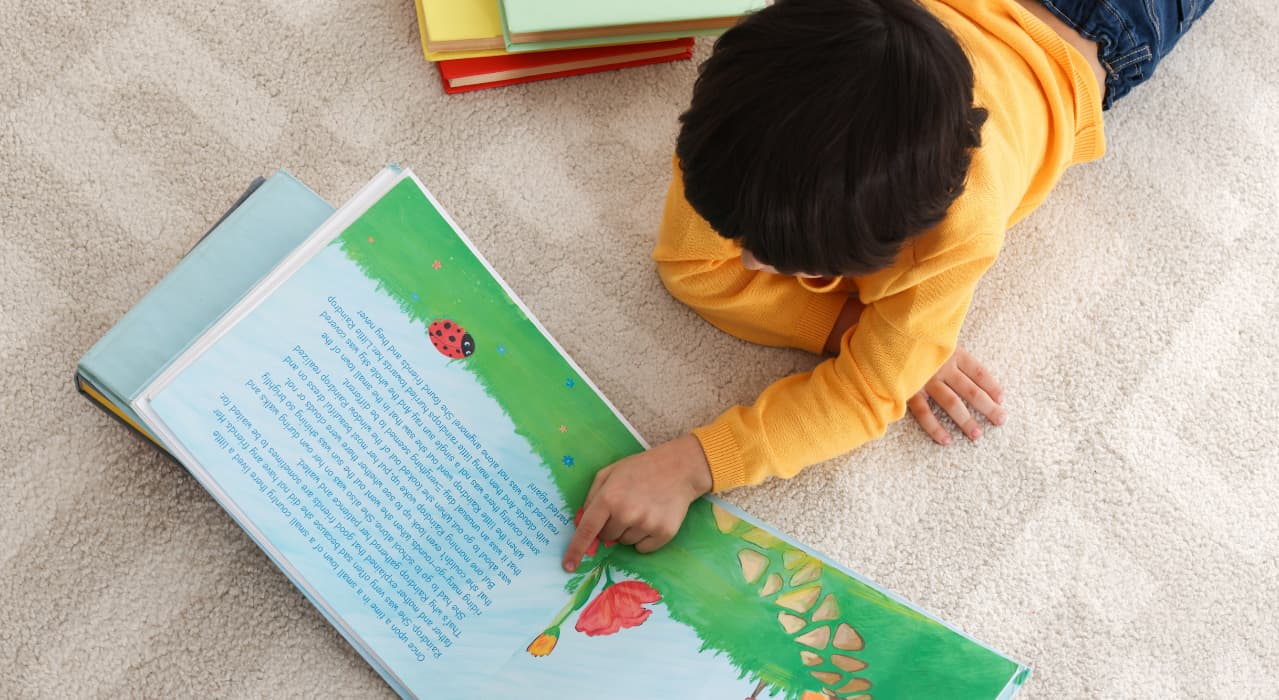
1. Read Together Every Day
Emphasize the importance (and enjoyment) of reading by exploring books together every single day. The American Academy of Pediatricians encourages parents to begin reading to their children from day one. This helps little brains begin to recognize speech patterns and sounds. As infants begin to sit up and take notice, they’ll take more interest in books, learning to turn pages and look at pictures.
Shared reading is a great way to engage with your child and build these early literacy skills. Learn more about shared reading and its benefits here.
Choose reading material on a wide variety of topics, and give them lots of options to pick from. Point to words on the page as you read, to help children make the connection between written and spoken language. As your child learns to talk, ask them to re-tell the stories back to you, or act them out together. This is the start of reading comprehension–understanding what they read.
2. Develop Phonological Awareness
By the toddler years, your child is ready for pre-reading activities. The first concept to work on is called “phonemic awareness,” which means understanding that words are made up of individual sounds (called phonemes). It seems like a very obvious concept to adults, but this is a major step toward connecting written language with speech.
As you work on alphabet skills, introduce kids to the concept of consonants and vowels. Unlike most consonants, vowels can make different sounds depending on where they occur in a word and the letters around them. This can be confusing to kids, but most words follow some simple vowel rules.
Learn more about preparing your preschooler to read here.
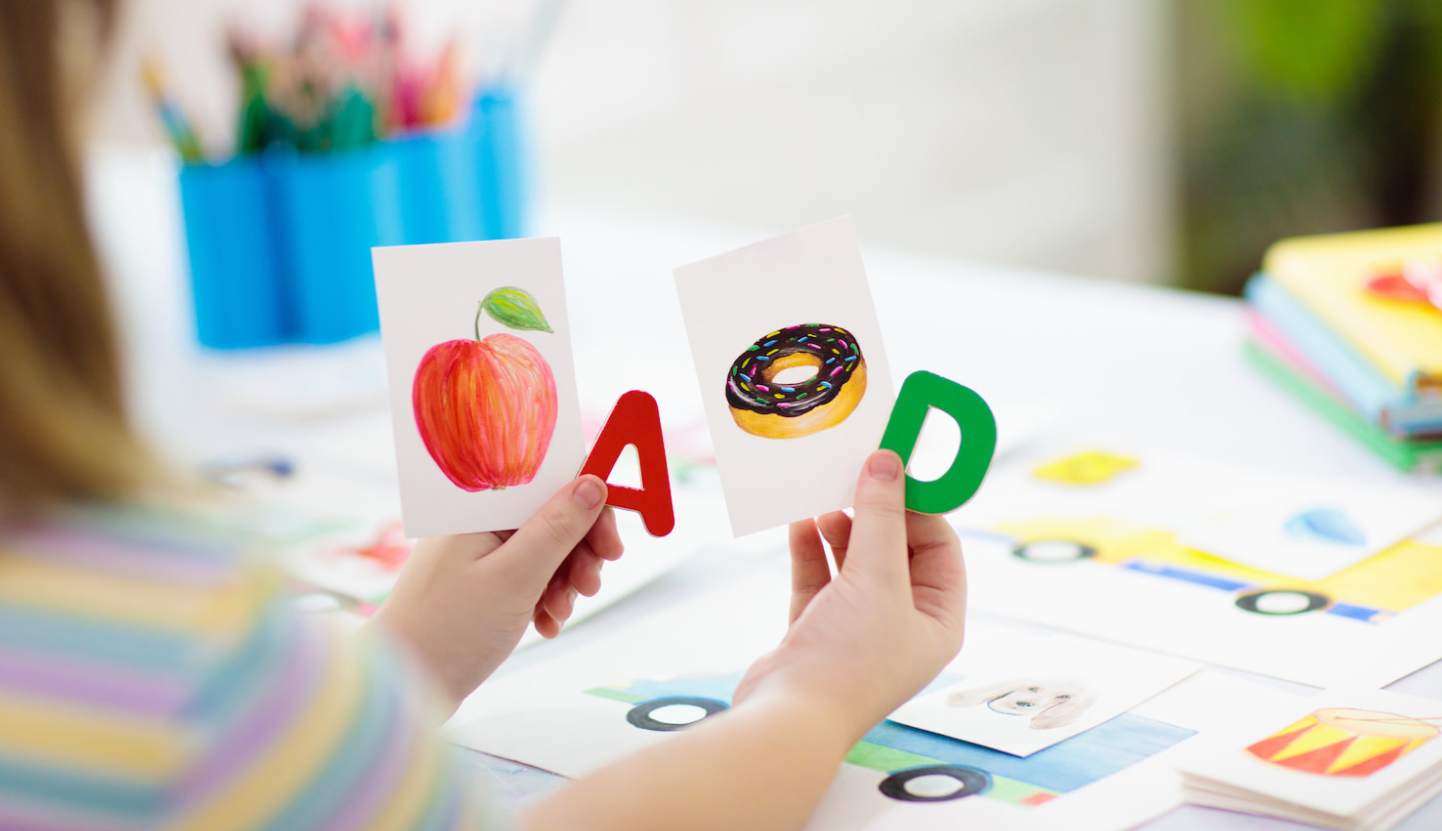
3. Learn the Letters and Sounds of the Alphabet
Preschoolers continue their pre-reading skills by learning to recognize the letters of the alphabet, both uppercase and lowercase. They also master the sound (or sounds) each letter makes. Making the connection between letters and sounds is known as phonics, and it’s one of the foundational skills we use to teach a child to read.
- Practice alphabet skills on the go by pointing out letters on signs and saying the sounds they make together. Kids start at the beginning, and as they step on each letter, they say the sound it makes. If it makes more than one sound, they must say all the possible sounds before they move on. Time your child, then see if they can beat their best scores each time they play.
- Play games with alphabet blocks, beads, magnets, and other manipulatives, such as hiding letters for your child to find.
- Match letter cards or coloring pages with objects that start with that letter, or play Go Fish with alphabet cards.
- Give your child as much practice as possible with letters and letter sounds, so they’ll feel confident as they move on to the next steps.
#1 Downloaded Kids’ Education App in the U.S.
The ABCmouse app has so much to offer! You and your child will find 10,000+ games and activities designed by curriculum experts to nurture math and reading skills, along with an extensive digital library and so much more. Our research-back curriculum focuses on preschoolers through second graders.
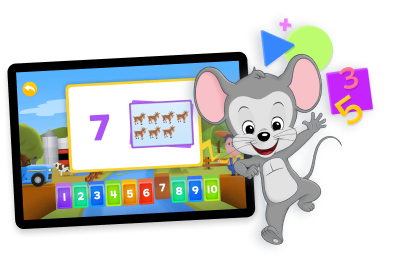
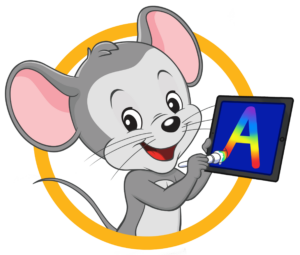
Then just $14.99 a month until canceled
4. Recognize Vowels and Consonants
As you work on alphabet skills, introduce kids to the concept of consonants and vowels. Unlike most consonants, vowels can make different sounds depending on where they occur in a word and the letters around them. This can be confusing to kids, but most words follow some simple vowel rules.

Consider using a set of alphabet manipulatives that uses one color for consonants and another for vowels. Once your child recognizes which letters are vowels (a, e, i, o, and u), you can begin learning about the different sounds each one makes. Discuss long and short vowel sounds, and practice saying them together. Explore more about teaching kids vowel sounds here.
5. Begin Decoding Simple Words
The big moment is finally here–your child is ready to start blending letter sounds into words! The process of translating written words into speech is known as “decoding.” Start decoding with two and three-letter words, focusing on what are known as CVC words. This stands for consonant-vowel-consonant, and includes words like “cat,” “big,” and “sit.”
Show your child the letters that make up a CVC word like “sit,” keeping the letters separate at first. Have them say the sound for each letter (using the short vowel sound), one at a time. Then, move the letters closer together, and have them say the sounds more quickly. Finally, move all the letters together, and ask them to blend the sounds together into the word itself. Now your child is reading!
Check out our list of 23 ways to help kids practice decoding here.
6. Introduce High-Frequency Words
English is a tricky language, full of words that don’t follow the typical rules. That’s where high-frequency words come in. These are common words that kids won’t be able to easily sound out, like “would” or “people.” High-frequency word lists also include everyday words that are helpful to know right off the bat, like “the,” “and,” or “how.”
Learning high-frequency words combines phonics with memorization. While children are encouraged to sound out the words they see, recognizing these words on sight can help speed up the process of teaching a child to read, and makes it more fun and less frustrating for the learner. Children will find they can move on to more interesting reading passages and books once they have more of these words under their belt.
Kids can start learning high-frequency words in preschool or kindergarten, and the process continues through at least second grade. Get more insights on teaching sight words here.

7. Tackle More Advanced Reading Concepts
CVC words and sight words give kids a good decoding foundation. Once they’ve developed some comfort with those, you’re ready to move on to more complex concepts.
Some of these include:
- Letter blends: In a letter blend, two or more letters are each pronounced, but flow smoothly together. In the word “flow,” /fl/ is a letter blend. Common letter blends combine a consonant with s, l, or r, for example /sn/, /bl/, and /tr/.
- Digraphs: In contrast to blends, digraphs combine two or more letters together to make one single sound. For instance, in the word “photo,” /ph/ is a digraph. Other digraphs include /sh/, /th/, /ch/, and /ck/. Vowel digraphs include -ee, -ea, -ie, and -oo.
- R-controlled vowels: These sounds are formed by a vowel followed by the letter r. For instance, in the word “car,” /ar/ is an r-controlled vowel. Other common r-controlled vowels are /er/ and /or/.
- Silent E: Words with the spelling pattern CVCe are known as “silent E” words. We often teach children that “silent E makes vowels say their name.”
Kids usually work on more advanced concepts like these (along with other reading skills) in first and second grade.
Explore engaging reading activities for kindergarteners here.
8. Read Aloud for Fluency
Throughout the process of teaching a child to read, it’s important to read out loud together. Parents should read aloud often, modeling fluency and expression. Kids can read out loud to you, to themselves, to friends, and even to their toys.
Make videos or sound recordings of your child reading, and watch or listen to them together so you can identify successes and challenges. If your child is stuck and feeling frustrated, return to earlier recordings to show them just how much they’ve improved.

Remember that reading doesn’t have to be limited to books. When you’re out and about, ask your child to read out signs, menus, and more. This helps them understand the importance of reading as a real-life concept.
9. Talk About Books to Practice Reading Comprehension
Sounding out words is just one part of reading. It’s also important to ensure kids understand the text. Ask questions as you read, such as “Why do you think this character did that?” or “What do you think will happen next?”

A family book club can be a terrific way to practice reading comprehension. Choose a book to read out loud together; you can take turns reading aloud with kids as they gain reading skills. Talk about the book as a family, discussing what happened and how it made you feel. Plan activities to accompany your reading, like visiting places from the book or eating foods the characters enjoy. Show kids how reading can help us all feel connected.
10. Make Reading a Fun and Engaging Activity
Some kids might be reluctant readers, you can draw them in with books on subjects they enjoy; many developing readers are especially engaged by non-fiction about their favorite sports, foods, or activities. Don’t be afraid to let them read comics or graphic novels–all reading counts.
While any reading is worthwhile, do be sure to push your child a little bit out of their comfort zone as they learn. Put books on their stack that are just slightly challenging, enough to help them learn but not so hard they give up. Introduce them to a variety of genres and let them find their favorites. Remember: the right book is the one your child is eager to read!
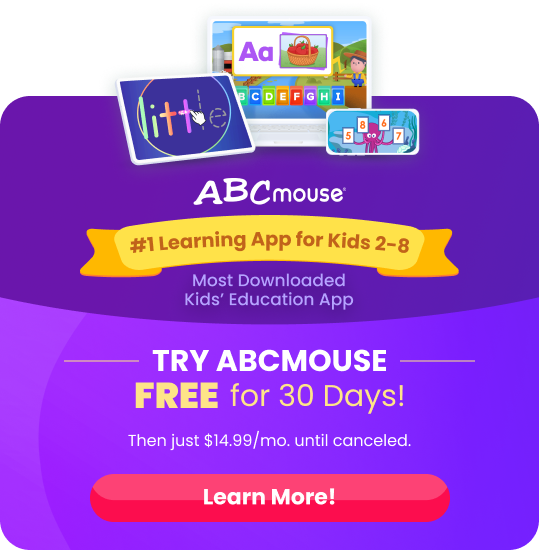
Keep Learning!
For more insights, activities, and worksheets on reading, check out:
Fun Reading Activities for Preschoolers
Find a variety of activities that help make learning to read feel like play.
Browse →
Reading Comprehension Worksheets for Kindergarten and Up
Help grow your child’s reading ability with worksheets that focus on various literacy skills.
Browse →
Explore the ABCmouse Library
An ABCmouse subscription provides access to over 400 digital books, including read-along books and books in Spanish.
Browse →
Educational Reading Games by ABCmouse
Engage your child with interactive reading games with voiced instructions for easier understanding.
Browse →
ABCmouse’s expert advice review process:
Our team of ABCmouse Curriculum Experts, made up of talented professionals in early childhood education and development, take a close look at educational content and learning claims. They put in the effort to make sure our information is accurate and current. We have a certified educator or another respected authority review the content, matching their expertise with the topic at hand. They’ll make sure the content is thorough and follows the latest research and educational guidelines. If they think we can make things even better, they’ll chat with our editorial team, and we’ll make those improvements right away. Only after a reviewer gives their thumbs-up does a piece of content get the official stamp of approval in the byline.
